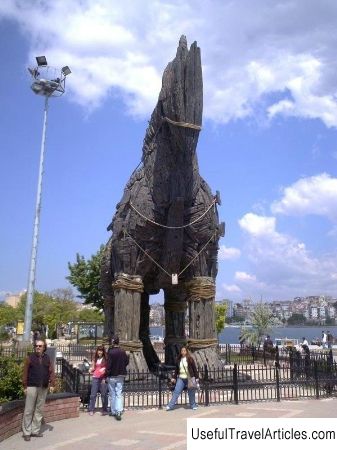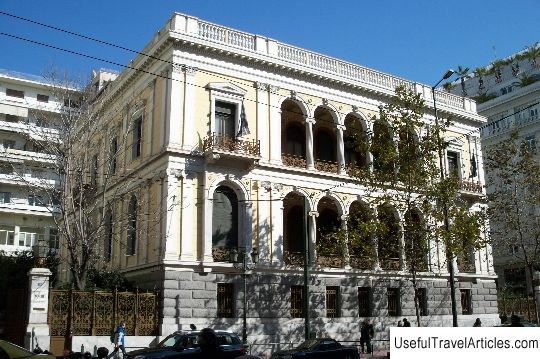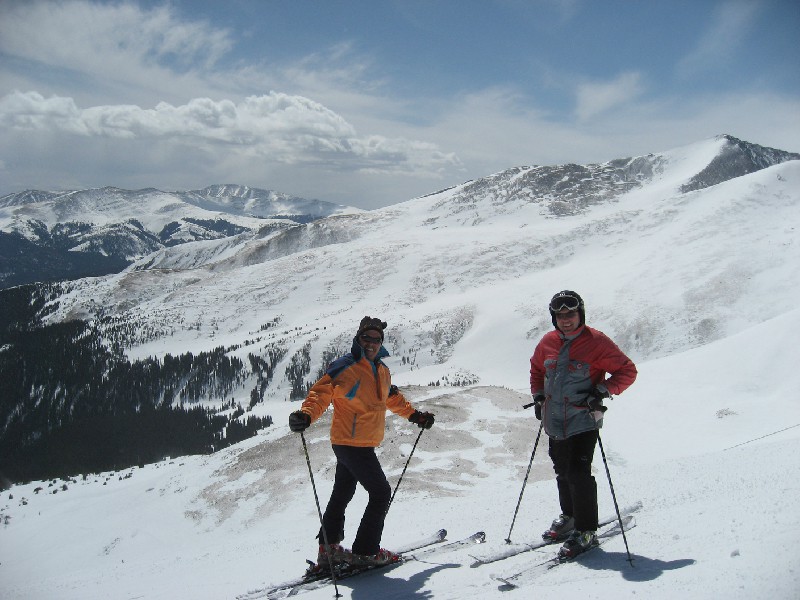Troy (Troy) description and photo - Turkey
Rating: 9,5/10 (3455 votes) 
Troy description and photo - Turkey. Detailed information about the attraction. Description, photographs and a map showing the nearest significant objects. The title in English is Troy. Photo and descriptionTroy, the city described by Homer in the poem "Iliad", is an ancient fortified settlement of Asia Minor, located on the shores of the Aegean Sea, near the entrance to the Dardanelles. While vacationing in Turkey, do not miss the chance to see this grandiose city and once again remember the events described by Homer. In the ruins of Troy, you can visit several archaeological zones belonging to certain cultural layers, and learn the peculiarities of the life of the people who inhabited this land. Excavations of the ancient city began in 1870 by German amateur archaeologist and entrepreneur Heinrich Schliemann. From childhood, he was fascinated by the story of Troy and was convinced of the existence of this settlement. Excavations began on a hillside near the village of Hisarlik. The ruins of nine cities were discovered, one below the other. The archaeologist found a large number of items made of bone, stone, copper and precious metals. In the depths of the hill, Heinrich Schliemann came across a very ancient fortress, which he confidently called the city of Priam. After Schliemann's death in 1890, the work was continued by his colleague Wilhelm Dorpfeld. In 1893 and 1894, he excavated the wider perimeter of Troy VI. It is this city that belongs to the Mycenaean era and therefore it was recognized as Homeric Troy. The most intensive excavations are now being carried out on the territory of this cultural layer, which bears obvious traces of a fire. In ancient times, Troy played a leading role in the region both from a military and economic point of view. She had a large fortress and a defensive fort on the seashore, which gave her the ability to control the movement of ships through the Hellespont and roads, connecting Asia and Europe on land. The ruler of the city taxed the transported goods or did not let them through at all. This led to numerous conflicts in the region, which began in the Bronze Age. Economic and cultural ties connected Troy of that period not with the East, but with the West and the Aegean civilization. The city has been inhabited almost permanently for three and a half millennia. Thanks to archaeological excavations, it is known that most of the buildings in Troy were erected on low stone foundations, and their walls were built of mud bricks. When structures collapsed, their fragments were not cleared, but only leveled the place for the construction of new buildings. In the ruins of Troy, there are 9 main layers that have their own subdivisions. The peculiarities of the settlements of different eras can be characterized as follows. The first city was a small fortress, the diameter of which did not exceed 90 meters. The structure had a strong defensive wall with square towers and gates. The ceramics of this period have a polished surface of gray and black and are sculpted without the use of a potter's wheel. There are copper tools. A large citadel with a diameter of about 125 meters was built on the ruins of the first fortress. It also had high thick walls, gates, and protruding towers. A ramp led to the southeast side of the fortress. The defensive wall was twice restored and expanded with the growth of the city's power and wealth. In the center of the fortress there are the remains of a palace with a beautiful portico and a huge main hall. The palace was surrounded by a courtyard with small living quarters and warehouses. The seven stages of the existence of Troy II formed overlapping architectural layers. At the last stage, the settlement died in such a strong flame that from its heat stone and brick crumbled and turned to dust. Judging by the large number of valuables and household items found, the fire was sudden and the inhabitants of the city did not have time to take anything with them. The settlements of Troy III, IV and V consist of clusters of small houses separated from each other narrow streets. Each of them is larger than the previous one. These periods are represented by vessels with molded images of a human face. Along with local products, imported goods characteristic of mainland Greece were also found. The first stages of settlement VI are marked by evidence of the presence of horses. At this time, the city was extremely rich and powerful. The diameter of its fortress exceeded 180 m, and the width of the wall, built of cut stone, was about 5 meters. Along the perimeter of the citadel were at least four gates and three towers. Inside the settlement, large buildings and colonnaded palaces were located in concentric circles, rising along terraces to the center of the hill. The end of this era was a very strong earthquake, which covered the walls with cracks and brought down the buildings themselves. In all subsequent stages of Troy VI, gray Minoan pottery remained the main type of local pottery production, which is complemented by several amphorae brought from Greece and vessels imported in the Mycenaean era. Later this area was re-populated. Remaining wall pieces and building blocks were used again. Now the houses were already being built smaller in size, they nestled against each other, so that many more people could fit in the fortress. Large jugs were now kept in the floors of the houses for supplies in case of any disasters. The first period of Troy VII burned down, but part of the population returned and settled again on the hill. Later, another tribe joined the inhabitants, which brought with them ceramics made without a potter's wheel, which indicates the ties of Troy with Europe. Now it has become a Greek city. Troy was fairly well-maintained in the early periods, but by the 6th century BC. part of the population left the city and it fell into decay. On the southwestern slope of the acropolis, the remains of the temple of Athena of that time have been preserved. In the Hellenistic era, this place did not play any role, except for the associated memories of the heroic past. In 334 BC. Alexander the Great made a pilgrimage to this city. His successors and the Roman emperors of the Julian-Claudian dynasty carried out a large-scale reconstruction of the city. The top of the hill was cut and leveled, so that the VI, VII and VIII layers of Troy were mixed. The temple of Athena with a sacred site was built here. A little further south, on a level ground, public buildings were erected and walled, and a large theater was built on the northeastern slope. In the era of Constantine the Great, the city flourished and the ruler was even going to make it the capital, but the settlement lost its significance again with the rise of Constantinople. Today, the area around Troy has changed beyond recognition. The muddy deposits of local rivers flowing into the bay moved the coastline several kilometers to the north. Now the ruins of the ancient city are on a dry hill. A team of scientists has dated the fossils found in the soil taken from the valley of the two rivers using radiocarbon analysis methods. Based on these data, the researchers were able to determine the topography of this area in the era of Homer. The restoration of the famous Trojan horse has now been completed on the excavation site, and tourists visiting Turkey have a unique opportunity to examine this wooden masterpiece, which exactly matches the description of Homer. The Trojan Horse, which once helped the cunning Achaeans to capture the city, is now an original panoramic platform. Unfortunately, apart from the layout of the horse, there is little that can attract the eye of the traveler. It is believed that this place is one of the greatest fairy tales in the world, therefore it will be sufficient to just soak in this atmosphere.       We also recommend reading Mandraki Port description and photos - Greece: Rhodes Topic: Troy (Troy) description and photo - Turkey. |




